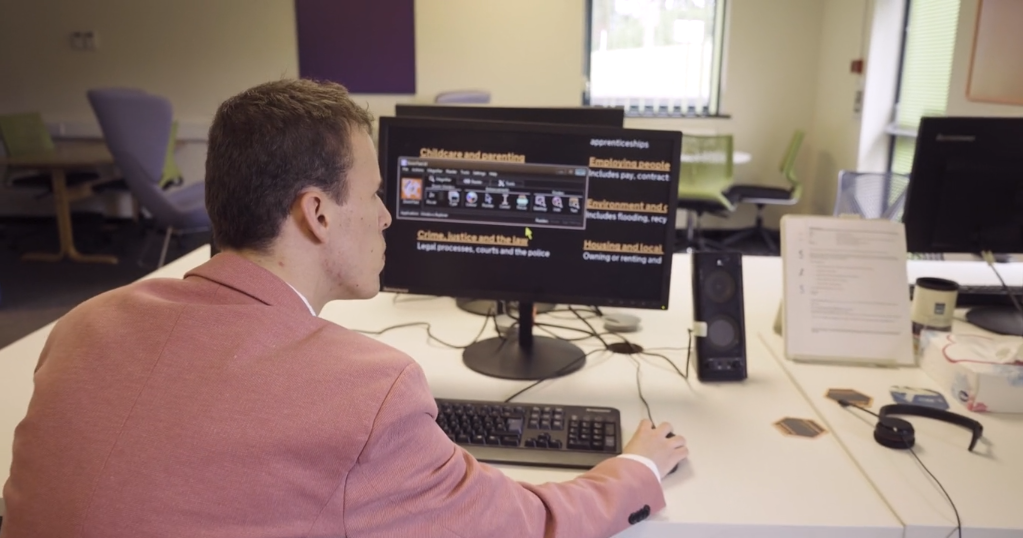Here at HeX Productions, we’re advocates of making the internet more of an inclusive place to be. And as part of this, we ensure that the websites we design and develop are accessible for people with disabilities or impairments who use assistive technologies.
Assistive technology is an item, piece of equipment, software programme or product that is used to maintain, or enhance the functional capabilities of people with disabilities. This can be anything from low-tech communication boards made from felt to high-tech special-purpose computers.
Assistive technology helps people who have difficulty with their mobility, speaking, typing, writing, remembering, pointing, seeing or hearing and many other things. Different disabilities require different assistive technologies, and even the same disability can vary in severity.

What assistive technology can help people use the web?
When accessing the web, the following are the assistive technologies that people with disabilities will be using and the ones developers need to be concerned about compatibility with when building websites:
Screen readers
Software that is used by blind or visually impaired people to read the content on the s6creen, allowing the user to navigate. Examples of screen reading software include JAWS for Windows, NVDA or Voiceover for Mac.
Screen magnification software
Allows users to control the size of text and graphics on the screen. Unlike using the zoom feature, these applications allow the user to have the ability to see the enlarged text in relation to the screen. It emulates a magnifying glass over the screen.
Text readers
Software used by people with various forms of learning disability that affects their ability to read the text. Using a synthesised voice, the software reads the text aloud, emphasising words being spoken. Text readers do not read menu items however, they only read the text.
Speech input software
When people find typing difficult due to low mobility, users can command the computer to replicate mouse actions. The software will detect links and number them, meaning clicking a link is as simple as commanding the computer to “click link 4”. The popular piece of software is called Dragon Naturally Speaking for Windows or Mac. Both operating systems do have speech recognition utilities but cannot be used to browse the web.
Alternative input devices
Some users may not be able to effectively use a keyboard or mouse combination, so have to use different forms of input in order to navigate. These include:
Head pointer
A stick or object mounted directly on a user’s head that can be used to push keys on a keyboard.
Motion/eye tracking
This tracks movement in the retina or another part of the body and will interpret this to direct where the user wants the mouse to go.
Single switch entry devices
These are used with on-screen keyboards where a cursor automatically moves through the keys and a user will click a switch when the key they require is highlighted. This can also work on a website, where a cursor will move over all of the links and the user clicks when they want to select a link.
Why should you care about designing for assistive technology?
Inclusivity goes beyond acceptance and lets everyone thrive. Simply speaking, a website created in an accessible way ensures that it is simple, easy to use and has no technical errors, meaning that it not only works well for disabled people but for everyone.
You may be thinking, “but only 1% of our users are blind” – this thinking occurs when accessibility is viewed as an optional feature or enhancement. Accessibility should always be applied in the initial stages of a website development, making your service or information available to the largest user base possible. We have a core belief that accessibility is everyone’s responsibility, and, for British businesses, it is time to start accepting that.
For public sector businesses, you have no choice but to care due to a new piece of legislation coming into effect, forcing all public-sector websites to be accessible by September of 2020. You can find out more about this legislation here.
